1021 Canadian science on Easter Island
Stanley’s Dream: The Medical Expedition to Easter Island
by Jacalyn Duffin
Montréal & Kingston: McGill-Queen’s University Press, 2019
$39.95 / 9780773557109
Reviewed by Colin Levings
*
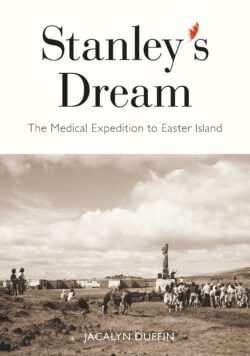 Stanley’s Dream, Jacalyn Duffin’s book on the 1964-65 Medical Expedition to Easter Island (METEI) is an intriguing detailed compendium, retrospective analysis, and overall fascinating story of one of Canada’s major standalone contributions to international science, an accomplishment almost totally unknown until the publication of this volume.
Stanley’s Dream, Jacalyn Duffin’s book on the 1964-65 Medical Expedition to Easter Island (METEI) is an intriguing detailed compendium, retrospective analysis, and overall fascinating story of one of Canada’s major standalone contributions to international science, an accomplishment almost totally unknown until the publication of this volume.
Located 3700 km of the coast of Chile, the island’s remote location and intriguing culture has long fascinated those interested in Polynesian culture. Thor Heyerdahl’s 1958 book Aku Aku, based on his Kon Tiki expedition, is perhaps the account that most people think of in relation to Easter Island, but Stanley’s Dream deals with a totally different voyage. Set up to provide baseline data on the island’s humans and their ecosystem, METEI was representative of the genre of “survey sciences,” a class of geographically-oriented scientific investigation to unique or previously unexplored areas that may involve a degree of hypothesis testing, but in general are observational.
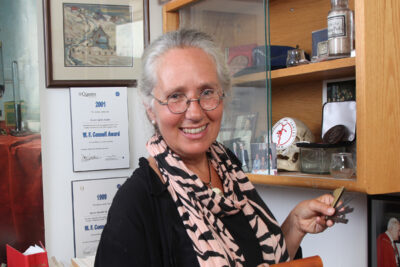
Survey science expeditions have ranged from Franklin’s hunt for the Northwest Passage to NASA’s moonshot. Historians Simon Naylor and Simon Schafer have analyzed the issues of survey science in the 19th century and noted that, “Part of the fundamental puzzle of the survey sciences was their apparent dependence on reliable action at a distance, through the despatch of delegates, whether human travellers or material apparatus, who could then be trusted to behave appropriately and accountably elsewhere, whether at sea or on land” — comments that are perhaps very relevant to METEI, as Duffin reveals. There have been many survey science expeditions within Canada in recent years — in fact Federal agencies such as the Geological Survey of Canada have a strong mandate for them — but I doubt that there has been a Canadian international science survey of METEI’s scope since it was completed.
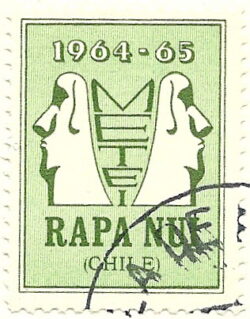
Stanley’s Dream provides a detailed and quite readable account of a unique Canadian project that has lessons for the survey scientist of today. Nevertheless, the “fundamental puzzle” of how survey science works remains, and will remain, given that the success of “despatch of delegates… [and the] human travellers and material apparatus” remains susceptible to the foibles, flaws, and problems involved in any expedition. Susceptibility was to be expected in a project involving a rather hastily organized group of 39 people and sophisticated medical equipment brought 12,500 km by sea to a remote island.
As a general perspective the book could be divided into two parts – a medical/scientific component that deals with data and data interpretation, and a biographical and sociological/political component that deals with people in the expedition and their political supporters. The political universe mainly involved officials from Canada and Chile (Easter Island is a Territory of Chile). Stanley’s Dream, like the expedition itself, may be unique owing to an absence of book-length studies for other Canadian expeditions, although I did not search the literature thoroughly.
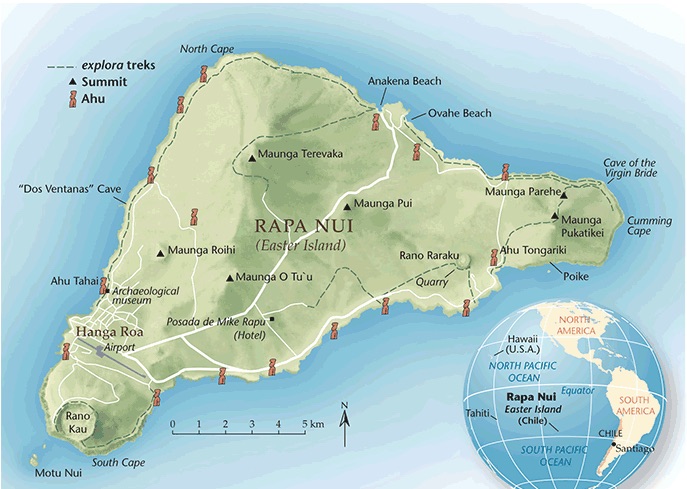
The short Introduction reveals that the idea for the book came while Duffin was browsing UBC Archives and came across ecologist Ian Efford’s METEI files on the expedition. As a medical historian and scholar well versed in the literature, Duffin quickly realized that METEI had an extremely low profile in Canada, and yet it was one of the most ambitious international scientific projects ever attempted by this country.
“Dreamed up” by McGill University’s surgeon Stanley Skoryna and microbiologist Georges Nógrády in 1962, the project was to provide medical and biological profiles of Easter Island (also known by its native name Rapa Nui), as the “before” condition prior to the opening of an international airport on the Island. The Introduction also sets the scene for what is to come later on and quickly makes the point that Stanley’s Dream has a strong scientific component, with appendices of raw medical data, as well as biographical portraits of the people connected to METEI.
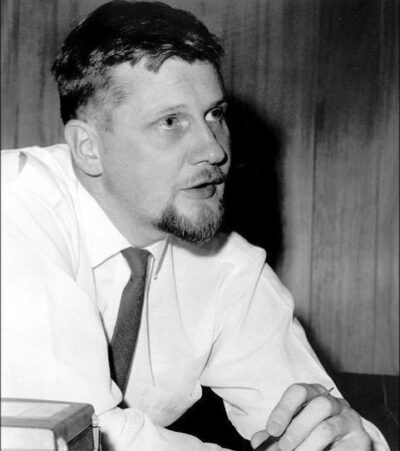
Although the expedition was spearheaded from eastern Canada, Ian Efford gives it a substantial west coast dimension. Skoryna had originally invited well-known wildlife scientist UBC Ian McTaggart Cowan to cover ecology, but he could not participate, and so in March 1964 he asked recent Oxford graduate and newly-hired UBC ecologist Ian Efford to attend, and he agreed to the venture. He and his graduate student Jack Mathias did extensive collections of plants and animals on the trip. 384 fish specimens from the expedition remain in the Beatty museum at UBC and some of their collections were parcelled out to taxonomic experts around the world. Efford, who died in June 2020 in Duncan, was recognized by colleagues as one who approached “ecological research with boundless enthusiasm.” In the 1970s he initiated one of the world’s first whole ecosystem projects at Marion Lake in the UBC research forest near Haney, a major Canadian contribution to the United Nations International Biological Program.
Stanley’s Dream is divided into three parts. Part One deals with the time between 1962, when Skoryna first conceived the project (his “dream”), and December 20 1964, when METEI preparatory work was finished so that their work could began on the island. It consists of four chapters. Chapters 1 and 2 provide a detailed account of how Skoryna persuaded officials at the highest political levels (Prime Minister and Ministerial), as well as private companies such as the Alberta Trailer Company (ATCO), the World Health Organization, academic agencies, and other organizations to fund or sponsor the expedition throughout his networking. METEI members were supported by their home agencies, mainly in Canada. Skoryna apparently was well-known as an “operator.” Indeed — pulling off a trip to Rapa Nui from Halifax and back using the 135 m Royal Canadian Navy ship Cape Scott was a major feat, which admittedly was leveraged by a good will tour of Pacific coast South American countries and their naval bases.

Another lever was the concept that METEI would be a Canadian contribution to the International Biological Program (CCIBP), a UN initiative that Canada was involved with. Duffin suggests that Skoryna might have spent too much time networking and not enough on background reading because it turned out Chilean researchers had already done a baseline survey and published their results. Another point missed related to the idea that the Rapa Nui population was genetically homogenous, and therefore thought to be more susceptible to disease arriving via the planned new airport. But this was clearly not the case as the islanders had been visited by Europeans frequently since their first contact by the Dutch in 1722.

Chapter 2 is an analysis of the sometimes-clashing personalities of the researchers and chroniclers, including journalists who were invited or inveigled their way onto the expedition. Table 2.1 lists the names and surnames of the 39 people in METEI together with their specialities. This key table is almost worth memorizing before reading the book because the author frequently refers to the people by their first or second names, so to get their context the table is very useful. However, the “family tree” of METEI is more than just those people, and Duffin scrupulously reveals the connections of dozens of other people, including the Rapa Nui folk, Chile military staff, the crew of Cape Scott, and many others involved.
Chapter 3, “The Journey Out,” an interesting and revealing read, expands more on the cliques and personality conflicts which, as usually happens, are exposed and established when people are forced to live together on a ship on a long voyage. The Cape Scott left Halifax on November 21, 1964, and anchored off Rapa Nui on December 12 of that year. Chapter 4 describes the trials and tribulations of setting up the Atco trailers, which were to be the base for the expedition and where the physiological measurements were taken, and where samples of blood, urine, faeces and other material were obtained. As well as describing the logistic issues involved in setting up the camp, this chapter also provides important insight into the internal conflicts and personality clashes within METEI.
Also explained are connections with the people on the island as well as the internal and external political forces influencing the expedition’s work. The key external factor was the politics relating to the governor of the island and his relationships with Chilean authorities on the mainland. It was a difficult time for Chile in this runner-up decade before dictator Pinochet took over.
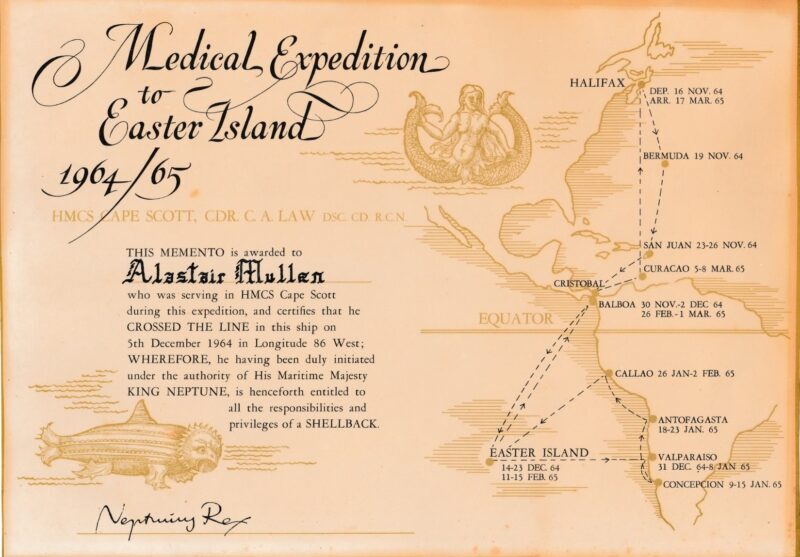

Part Two, containing four chapters, deals with the period between December 21, 1964, when METEI sampling and explorations started, and March 17, 1965, when the Cape Scott returned to Halifax. Chapter 5 describes in detail how the work began; the arrangement of Atco trailers (“Camp Hilton”); what the medical examinations consisted off; and how Camp Hilton operated. The two women doctors, Helen Reid and Maureen Roberts, together with their assistants, did most of the physical exams of the people. Even though clashes between “cliques” continued or even became more strident, the team kept up an amazing pace. For example, between December 28, 1964 and February 5, 1965, 958 examinations were completed (Figure 5).
Chapter 5 also reveals some details of the conflict between Skoryna and Dr. Richard Roberts, RCN’s medical representative on METEI and Deputy Director, especially about the pace of work and medical case sampling results. One team member ascribed this to their differing leadership styles — military vs academic — perhaps a not unexpected difference and one that often pops up in survey science where different management and scientific cultures are thrown together.
Chapter 6 deals with the “revolution” on the island that METEI had to deal with. Chilean authorities were not happy with the local mayor and sent a contingent of marines to the island. Matters were eventually resolved through an election, and we learn of possible interference by France in this issue as some islanders were sympathetic to joining Tahiti. Duffin is to be complimented for sleuthing out the details of the local and international political intrigues involved. This chapter also provides details on the diseases that METEI found on the island: Kekongo — an apparent viral illness with heavy coughing, fever, and other symptoms, as well as leprosy, diarrhea, and tuberculosis. More information about these diseases is scattered throughout the book.

Chapter 7, the “ecological” chapter, describes the trials and tribulations of gathering and cataloguing the thousands of biological samples obtained (including flora and fauna, parasites from domestic animals — there were 38,000 sheep on the island — and soil and water for bacterial and viral analyses. This chapter also describes the wrap-up of the medical work.
The final chapter in Part 2 deals with the good will tour of Cape Scott to mainland Chile and Peru. The ship left Rapa Nui on December 21, 1964 and returned to pick up METEI members on February 10, 1965. The loading of samples, equipment and personnel took two days and the departure at 6 pm on February 12th was not without logistic and personnel delays, much to chagrin of Commander Anthony Law. The return voyage took the ship to the Galapagos, Panama, and Colombia, and she arrived back in Halifax on March 17, 1965. A number of METEI left the ship in Panama or other ports and made their way home via various routes. Others delayed their return and attended a conference in Bogota.
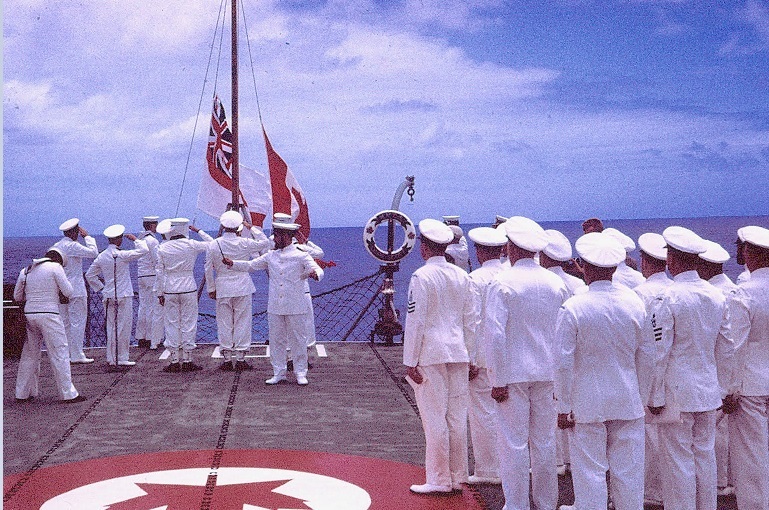
Part 3, consisting of six chapters, concerns the products of METEI and covers 52 years of post-METEI work, including post-mortem comments, research results, updates on the life of participants, attempts at follow up work, and observations of the author on her own trip to Rapa Nui in 2017. Along the way, these chapters give many details about interpersonal conflicts that arose, including issues like data ownership, authorship, and data disappearance.
Chapter 9 concerns personal and popular results, including reporting back to sponsors, presenting slide shows at meetings, writing magazine articles, and preparing movies. Dr. Helen Reid, one of the key members of METEI and Duffin’s former university advisor, published a memoir in 1965 of her experience. Skoryna and Law had meetings with Prime Minister Lester Pearson and Defence Minister Paul Hellyer, and gave them gifts from Rapa Nui. Hellyer’s office was concerned about the results of the $215,000 ($1.7 M in today’s dollars) spent on Cape Scott’s voyage.
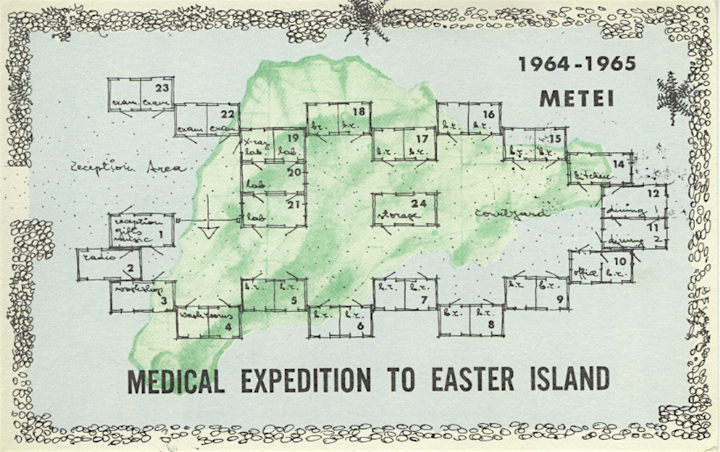
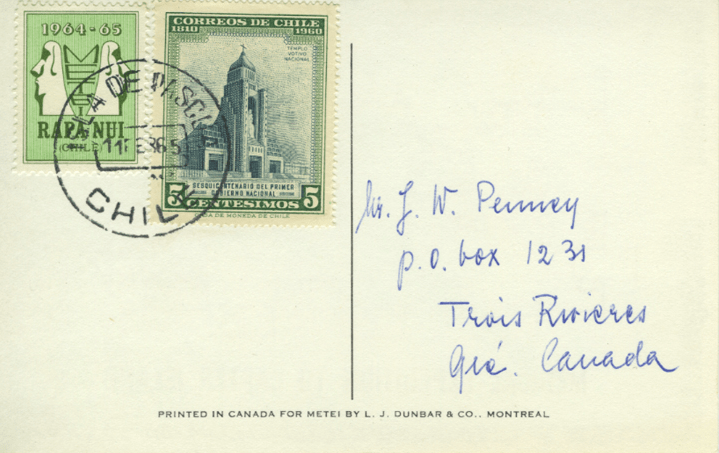
Chapter 10 is where the fate of some the scientific observations and data are described. We learned earlier that Skoryna did not write any papers himself, in keeping with his objective to work as a facilitator or coordinator rather than “Chief Scientist” of the expedition. Papers or reports were published on fish, plants, insects, and fungi. Efford did not publish anything dealing with the collections he and Jack Mathias made, but their material was utilized by experts around the world. For example, their ants were examined by renowned ecologist E.O. Wilson from Harvard.

As expected, the bulk of results are medically-oriented and deal with dentistry, work physiology, bone analysis (there was an “X-ray ruckus” about availability of the films for this project), electrocardiograms, and urine and blood tests (including genetic analyses). Social science results were published by expedition member Cléopâtre Montandon, whose raw data are archived in the Library and Archives of Canada, one of the few data sets so preserved. Although RCN doctor Richard Roberts obtained extensive data on what might be considered key baseline physiology data (blood pressure, cholesterol, glucose and hematology), he never published the results.
Roberts’ data are presented here in Chapter 11 and an appendix – Duffin has clearly done an important service by doing so. Perhaps one of the most shocking documents that Duffin ferreted out is the private report written by Roberts to his RCN superiors – a scathing report that heaps criticism on Skoryna and, it seems, the whole expedition. Apparent disorganization, over-inflated reports of results, and lack of preparation were his main complaints. Although Roberts was Deputy Director of METEI and should have encouraged reporting of findings, Duffin could find no clear reason why he was not interested in preparing reports on his own results, in cajoling members into writing papers, or especially in putting together a final report. As a result, until Duffin’s book was written, results from METEI (125 papers) were scattered in the literature and many results were not available.
In Chapter 12, perhaps one of the more uplifting in the book, Duffin describes the work and legacy of Skoyran’s co-dreamer microbiologist Georges Nógrády. He tried hard to encourage publication of METEI results, kept track of publications arising far more closely than Skoryna, hosted a major symposium on microbiology of the island in 1971, and produced a non-peer reviewed summary volume from this meeting. Nógrády’s premium contribution arose from his donation of soil from Rapa Nui to a researcher in Ayerst Pharmaceuticals who isolated a bacterium which secreted an antibiotic which was active against cancer. It is called rapamycin and is now widely used in cancer clinics and tissue or organic transplantation where it can simultaneously be used to inhibit rejection and to help the patient’s immune system to accept the transplant. As Duffin points out, Nógrády believed in sharing rather than hoarding his samples and his altruism led to perhaps the most important product of METEI.
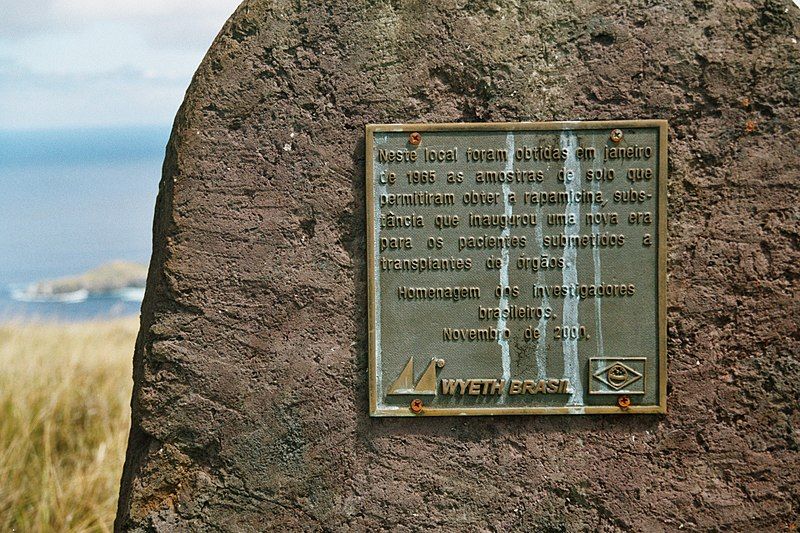
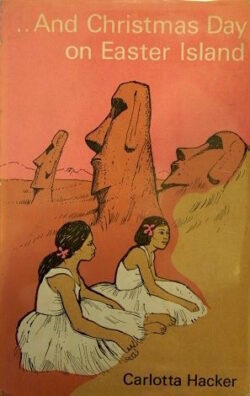
In Chapter 12 we learn that at least two METEI members seriously proposed a return trip to Rapa Nui to cover off things that had been missed. Efford contacted 20 scientists to resurvey ecosystems, but interest from them was slight and eventually he gave up the idea, along with almost everyone else. Also divulged in this chapter is the story of how METEI virologist Armand Boudreault from Montreal provided polio vaccine to the islanders, two years after his return and via two other members, Isobel Griffiths and Carlotta Hacker. Their visit also enabled them to wrap up a few items, including return of equipment.
In Chapter 13, Duffin circles back to the CCIBP, one of original platforms that Skoryna used as rationale for embarking on METEI, but subsequently almost totally forgotten, or ignored, in IBP circles when summaries were written for the international program. Funding issues, a propensity to focus on projects in Canada, and a wish to put distance between “operator” Skoryna are suggested as reasons. Amazingly, some of the METEI people connected with IBP in other projects, for example Efford, did not even know about the connection. Another part of this chapter gives an interesting update on METEI’s members’ personal life and careers.
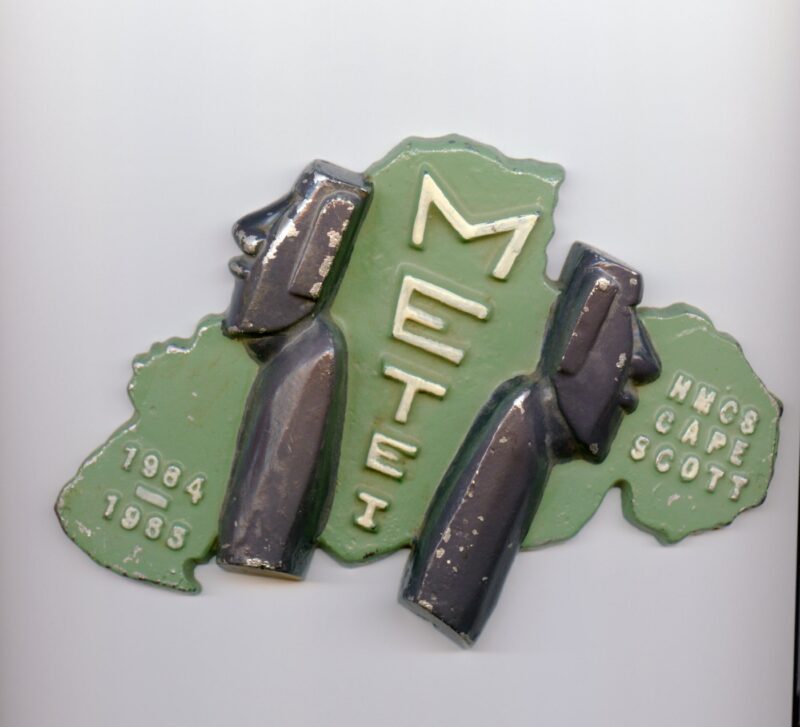
Duffin writes about her 2017 trip to Rapa Nui in Chapter 14. She presented islanders with a range of METEI products including publication lists, updates of METEI members’ lives, and digital images. Her description of the island, discussions with islanders, post-airport life, and how things had changed over the years is a good read. Duffin concluded that although Skoryna himself was still respected, the islanders’ opinion of METEI was mixed. As she explains, the negative aspects no doubt arise from the feeling of exploitation when foreigners arrived at their home, studied it to death, took things away (like artifacts, specimens, and medical data), and were never seen again. Duffin is to be credited in her efforts to improve the situation by bringing data, lists of publications, and other materials on her trip to the island.

Duffin’s short concluding chapter provides analyses of the whole METEI enterprise, with a balanced overview of its negative and positive aspects. Recommendations are subtly provided for any future expeditions and for ways that scientists might work together more effectively.
In summary, Stanley’s Dream is a major contribution to Canadian science history literature and although quite laced with medical and scientific terms, it should appeal to the general public. Unfortunately, there is no glossary, so a medical dictionary is needed for some specialized terms, e.g. cholecystectomy. There is a very good index. For those who wish to dive into clinical information, there is a wealth of previously unpublished medical data in various tables within the text and appendices. The book contains mini-biographies of most of the 39 METEI members and other key actors, with details gleaned from a host of documents, films, diaries, and interviews. Information on the lives and personalities of hundreds of other people mentioned are also given in the context of the expedition — over 300 are named in the index.
There is no way in this short review to do justice to the author’s detailed insight into the expedition’s work and personnel, except to say that she done a remarkable job in making a complicated story interesting. Stanley’s Dream contains numerous excellent photos of islanders, island scenery, and METEI and RCN personnel in action. Some of the photos are shown twice, once in black & white and once in colour (e.g. Figures 2.3, 3.10).
For those thinking about METEI as an example of survey science, Stanley’s Dream provides numerous “lessons learned” about planning, executing, accountability to sponsors, and especially archiving of results. The expedition provides an object lesson for managers of records and archives of complex projects, for without archives many of the extremely valuable data from METEI would have been lost. However, protocols do vary between disciplines — oceanography, for example, has a long-established tradition of publishing raw sample data in data bases that are available to all. METEI’s collections of flora and fauna are likely to become more important with the increasing interest in biodiversity.
Finally, I think Duffin would suggest that scientists in general should be attentive when it comes to data ownership, archiving, and sharing — benefits illustrated by Nógrády’s story on rapamycin and by the misfortune that all of Skoryna’s records were lost in a flood after his death.
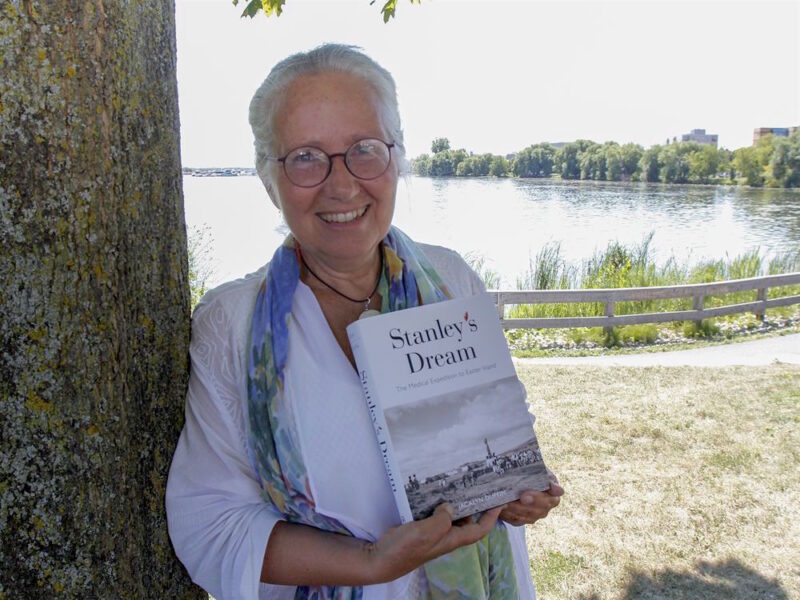
*
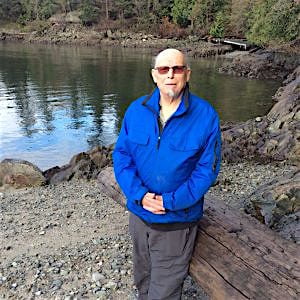
Colin Levings is a friend of METEI member Jack Mathias, Ian Efford’s graduate student assistant and youngest expedition member. Both Jack and Colin were students in zoology at UBC. While Jack was away, Colin occupied Jack’s room at his parents’ house in Vancouver and sometimes listened to his phone calls, which were patched through from Easter Island via a ham radio operator. Colin was born in 1942 in Victoria, went to high school in North Surrey, spent a lot of time fishing in the lower Fraser River, and began his career in marine science in 1962 as sea-going technician for the International Pacific Halibut Commission. He earned his B.Sc. and M.Sc. at UBC, and his Ph.D. at Dalhousie University. Colin retired as a research scientist from Fisheries and Oceans Canada in 2006, but continues as a reviewer, advisor, writer, and mentor: see his website for details. Recently Colin has been researching Edward Flanders Ricketts’ (author of Between Pacific Tides) studies in British Columbia. Editor’s note: see here for Bert Ionson’s review of Colin Levings, Ecology of Salmonids in Estuaries Around the World (UBC Press). Colin has previously reviewed books by Theodore Wells Pietsch and James Wilder Orr and Sean Fleming for The Ormsby Review. Colin Levings and his wife Kay live in Lions Bay and also spend time in Pender Harbour.
*
The Ormsby Review. More Books. More Reviews. More Often.
Publisher and Editor: Richard Mackie
The Ormsby Review is a journal service for in-depth coverage of B.C. books and authors. The Advisory Board consists of Jean Barman, Robin Fisher, Cole Harris, Wade Davis, Hugh Johnston, Patricia Roy, David Stouck, and Graeme Wynn. Scholarly Patron: SFU Graduate Liberal Studies. Honorary Patron: Yosef Wosk. Provincial Government Patron since September 2018: Creative BC
“Only connect.” – E.M. Forster
2 comments on “1021 Canadian science on Easter Island”
My husband Channing D. Glllis was a Commander on the Cape Scott on the Easter Island trip. Always a favourite memory for him!
pleasure to read again.